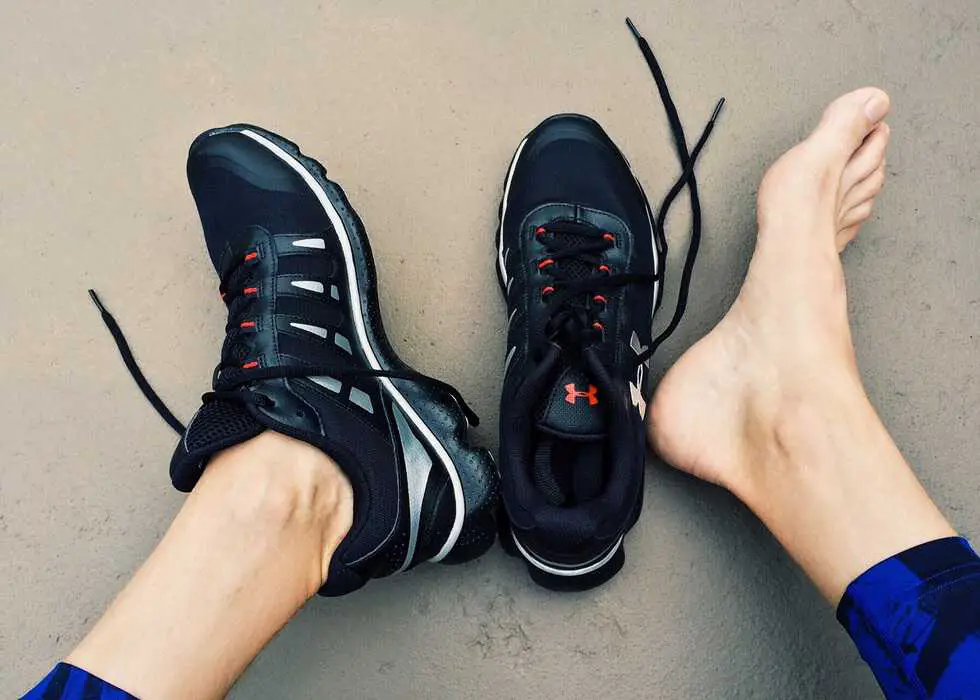When you’re first transitioning into a fully ketogenic diet, there can be a lot of hiccups along the way.
The transition into being truly fat adapted can be a lot for some individuals, especially if they’re coming to keto from a previously extremely high carb diet, which a lot of Americans and people from western countries do.
The collection of unwanted symptoms that can take place when going keto is referred to as the ‘Keto Flu’, and swollen hands and feet are one of those symptoms.
In this article, I’ll explain the causes behind swollen hands and feet, where keto comes into play with this symptom, and will provide a few ways to fix the swelling for good.
What Causes Swollen Hands and Feet?
-
You may be exercising too much
It may come as a surprise, but exercise can actually significantly contribute to experiencing bloating in your extremities. A lot of people assume is the antithesis to bloating because you will sweat more, but it can also significantly affect the distribution of your blood flow.
Exercising has been found to lead to increases in blood flow to the muscles, lungs and heart, but at the same time it can also reduce blood flow from your feet and hands, which cools them down. When this happens, your blood vessels will start to open up in order to counteract the pressure imbalance, which can often result in swelling.
-
Too much salt in your diet
Another cause for excessive bloating in the hands, ankles, and feet could be due to too much salt intake.
Your body is constantly working to maintain a balance of salt and water, and it can easily tip toward one or the other. It maintains this balance in order to keep your kidneys functioning properly, as they filter blood and flush out toxins and unwanted fluid.
If you eat too much salt, which can be easily done when maintaining the macro targets on a keto diet, it can put strain on your kidneys to filter at the same rate, which can lead to a fluid build up. This build up can collect in a variety of areas, but most notably takes place in your hands and feet.
-
You may be injured
One of the most common sources of swelling in the feet, independent of diet or exercise, is from foot injuries like strains, sprains, and broken bones. All of these types of injuries commonly result in swelling, because blood will promptly rush to the affected area promptly after the injury occurs.
When it comes to injury related swelling, keeping ice, compression, and elevation on the affected foot is the best way to bring down the swelling, along with the help of over the counter anti-inflammatory drugs like ibuprofen.
If these methods don’t bring the swelling down in a matter of hours, and the swelling turns into numbness and strains on mobility, you should seek medical attention.
-
Alcohol could be holding you back
Consuming alcohol (especially in excess amounts) can easily lead to swollen hands and feet because your body is likelier to retain more water after drinking. This swelling can last up to a few days, even if the drinking was done during a short time frame.
When it comes to swelling caused by alcohol, it’s advised to reduce salt intake, and greatly increase your water intake. Following a keto diet will also help because the lack of carbs will make it harder for your body to retain water for long periods of time.
You can check out my full guide on drinking alcohol on keto here to learn more.
-
Hot weather might be a factor
While it may seem simple, hot weather is commonly one of the leading causes in swollen feet and hands. This is largely because our veins start to expand as a part of the body’s effort at cooling us down.
When our veins expand, fluids will transfer into nearby tissues, which can lead to some bloating in the extremities. This result is especially common in people who already have circulatory issues to begin with.
If you know you’ll be in hot weather, it’s important to wear breathable shoes, drink plenty of water, and remember to stretch your arms and legs every once in a while to prevent blood from pooling in your hands and feet.
How Does Keto Cause Swelling?
It may seem impossible at first. The keto diet is supposed to help you lose water weight, so how could it possibly lead to swelling?
There’s actually a few different potential causes.
Sticking to a low carb diet can interact with certain types of medications in a negative way that can result in swelling fairly quickly.
Additionally, eating too much salt, or not enough salt, is an easy way to experience swelling in the hands and feet. Maintaining this balance can be tricky, but I’ve included some tips below on how to best balance your body fluids on keto.
Another potential cause for this unwanted swelling could be from getting too much protein into your diet.
The goal of the ketogenic diet is focused on a majority of calories coming from fats, with moderate amounts of protein, and a restricted amount of carbohydrates.
One mistake a lot of beginning keto dieters make is consuming way too much protein instead of fat.
This can be a problem because if the body gets too much protein all at once, it can enter a stage known as gluconeogenesis, in which your body will turn excess protein into glucose.
That glucose will likely make you take on water weight fairly quickly, resulting in unwanted swelling.
Lastly, the swelling can be a result of the keto flu, in which your body is struggling to fully become fat adapted, so it starts to fluctuate in ways that affect your fluid retention, the amount you sweat, and even your blood circulation to a degree.
How to Reduce Keto Swelling
-
Increase fiber intake
Increasing your fiber intake is one of the most effective ways to help your body balance its fluids and digest properly.
A lot of people miss out on significant amounts of fiber when starting out on the keto diet because they avoid total carbs altogether, even if they contain high amounts of fiber.
A good rule of thumb, especially for those new to the keto diet, is to focus on net carbs, which is a food’s total carbs minus its fiber and any carbs from sugar alcohols. This way you’ll be able to get the fiber you need without worrying about getting knocked out of ketosis.
I’d recommend starting out with some Metamucil, which mixes easily into water, and can really help regulate your digestion so that your body isn’t holding onto excess fluid that could result in bloating and swelling.
-
Lower FODMAPs intake
Sometimes swelling can take place from sensitivities to certain types of food. One of the most frequently experienced types of foods that people are sensitive to is known as ‘FODMAPs’, which stands for ‘Fermentable Oligosaccharides, Disaccharides, Monosaccharides, and Polyols’.
In layman’s terms this essentially means certain types of carbohydrates and natural sugar alcohols can cause sensitivities. These sensitivities can lead to bloating, and even swelling in some extreme cases.
A lot of natural foods that you wouldn’t think are that high in carbs or sugar alcohols to begin with are considered FODMAPs. Some of the more common keto-friendly FODMAPs include:
- Asparagus
- Cauliflower
- Cherries
- Artichoke
- Coconut Water
- Milk
- Sauerkraut
- Inulin
- Garlic
- Apricots
Cutting down on these types of foods may be able to bring swelling down fairly quickly.
-
Consume more probiotics
“Leaky gut syndrome”, also medically referred to as increased intestinal permeability takes place when the intestinal barrier is not filtering food properly, which can lead to bacteria and toxins getting into your body’s circulatory system. When this happens, your body can have an immune reaction that leads to inflammation, which can concentrate in your hands and feet.
This has been observed in keto dieteres who aren’t getting enough probiotics to balance the bacteria in their guts, which should be a priority when first starting out. An easy way to get probiotics into your system is through a fermented drink known as Kombucha. I usually get mine on sale over at Amazon.com
-
Eat more anti-inflammatory foods
Inflammation can definitely result in swelling in your hands and feet, and with the keto diet, preventing inflammation is one of the primary objectives.
Inflammation, if unchecked can potentially contribute to you getting kicked out of ketosis, so focusing on anti-inflammatory foods is essential.
Some of the best keto-friendly anti-inflammatory foods include:
Another way to cut down on inflammation is through getting enough Omega-3 fatty acids, which can come from fatty types of fish, as well as fish oil supplements.
-
Hydrate and refresh your electrolytes
Lastly, hydration and maintaining proper fluid balance is key when it comes to fighting off swelling that’s been induced by the keto diet.
Following a ketogenic diet can make it easy to miss out on vital electrolytes like magnesium, phosphorus, potassium, and calcium. That’s why it’s important to take some extra effort to get those electrolytes any way you can, without turning to foods that are high in carbs.
I personally use supplements to get my essential electrolytes. I find they don’t run the risk of hidden carbs, are affordable, and can come packed with other beneficial nutrients all in one place.
My personal favorite electrolyte supplement is the Keto K1000 Electrolyte Powder, which you can pick up right here on Amazon.com
Final Thoughts
Swollen hands and feet can be a fairly common experience for anyone starting a new diet, especially if it’s drastically different from the way they were eating before.
You should be prepared to go through a few types of changes when you’re getting fat adapted, from some mild swelling and bloating, to symptoms like dry mouth, irritability, kidney pain, and even hives and rash. Fortunately for most, these symptoms of the keto flu are temporary, and easily preventable and treatable with the right balance of fluids and lifestyle choices.
However, it’s important to assess all of the factors at play, because this type of condition can also be a symptom of something much more serious. If you find that your hands and feet are still swollen for a couple of weeks, you may want to consult with a doctor because there could be a bigger circulatory problem causing the swelling.


